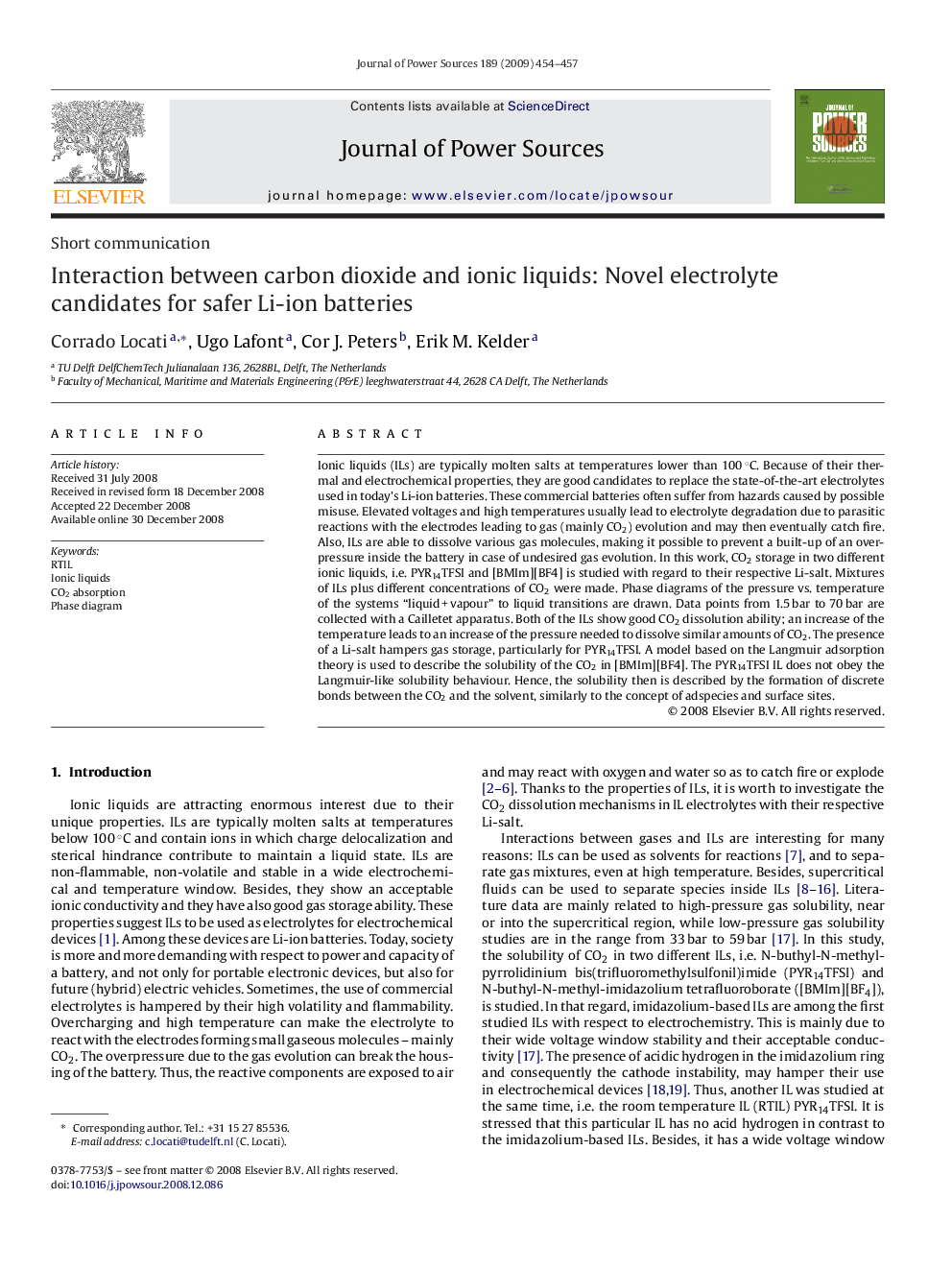| Article ID | Journal | Published Year | Pages | File Type |
|---|---|---|---|---|
| 1291211 | Journal of Power Sources | 2009 | 4 Pages |
Ionic liquids (ILs) are typically molten salts at temperatures lower than 100 °C. Because of their thermal and electrochemical properties, they are good candidates to replace the state-of-the-art electrolytes used in today's Li-ion batteries. These commercial batteries often suffer from hazards caused by possible misuse. Elevated voltages and high temperatures usually lead to electrolyte degradation due to parasitic reactions with the electrodes leading to gas (mainly CO2) evolution and may then eventually catch fire. Also, ILs are able to dissolve various gas molecules, making it possible to prevent a built-up of an overpressure inside the battery in case of undesired gas evolution. In this work, CO2 storage in two different ionic liquids, i.e. PYR14TFSI and [BMIm][BF4] is studied with regard to their respective Li-salt. Mixtures of ILs plus different concentrations of CO2 were made. Phase diagrams of the pressure vs. temperature of the systems “liquid + vapour” to liquid transitions are drawn. Data points from 1.5 bar to 70 bar are collected with a Cailletet apparatus. Both of the ILs show good CO2 dissolution ability; an increase of the temperature leads to an increase of the pressure needed to dissolve similar amounts of CO2. The presence of a Li-salt hampers gas storage, particularly for PYR14TFSI. A model based on the Langmuir adsorption theory is used to describe the solubility of the CO2 in [BMIm][BF4]. The PYR14TFSI IL does not obey the Langmuir-like solubility behaviour. Hence, the solubility then is described by the formation of discrete bonds between the CO2 and the solvent, similarly to the concept of adspecies and surface sites.
